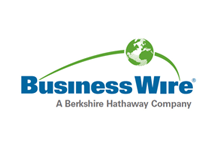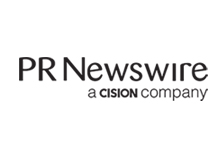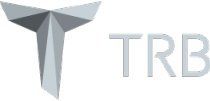Corning President and Chief Operating Officer Eric Musser to Retire; Company Announces Strategic Senior Leadership Promotions
Corning Incorporated (NYSE: GLW) today announced that Eric S. Musser, president and chief operating officer, will retire later this year after 39 years of exceptional service across the company. Musser will continue in his current role until his retirement.
This press release features multimedia. View the full release here: https://www.businesswire.com/news/home/20250430082548/en/
Recognizing Eric Musser for 39 years of outstanding service and lasting impact to Corning
In 2020, Musser was appointed president and chief operating officer to drive operational excellence within a new strategic operating structure oriented around the company’s Market-Access Platforms.
Wendell P. Weeks, chairman and chief executive officer, said, “Over the past five years as COO, Eric has helped us successfully manage through the pandemic and its aftereffects and then deliver in an exciting new growth period for Corning. Over nearly 40 years, Eric has exemplified the secret to Corning’s longevity: Each generation builds on the progress of those who came before, and we strive to leave a better version of our company for the next generation. We’re all working on a better version of Corning that Eric helped build. He’s helped set us up for success for years to come.”
Weeks continued, “Eric has not only implemented key improvements that have helped the company reach record productivity levels and drive efficiency, translating into increased market leadership, higher sales, and better profitability. But more importantly, he’s institutionalized his operational improvements, and he’s passing on an established system, so his successors can build on his outstanding record. That is perhaps among the hardest things a leader can do. I thank him for his lasting impact and his dedicated and exceptional service.”
Eric S. Musser, president and chief operating officer, said, “It has been an honor and a pleasure to serve Corning for nearly forty years. I was given a tremendous opportunity to grow with the company, and I am proud to be transitioning leadership in this moment of positive momentum and growth during Springboard. I know the company is in great hands – and I’m eager to watch our exciting future unfold under the leadership of Wendell and the next generation of top leaders on the Senior Leadership Team.”
Key leaders will position Corning for growth through Springboard and beyond
Corning also today announced that Avery (Hal) Nelson III has been elected executive vice president effective May 1 and will assume the role of chief operating officer, effective following Musser’s retirement later this year; Lewis Steverson has been elected vice chairman and executive vice president effective immediately; and John Zhang has been elected executive vice president and chief corporate development officer effective immediately.
Nelson, Steverson, and Zhang are all longstanding Corning veterans and senior executives who have served on the company’s Senior Leadership Team since its inception in 2020. Their promotions reflect a long-term and intentional leadership succession planning process designed to sustain and deliver consistent execution of the company’s value creation strategy. In their new roles, the three leaders will work collaboratively with the rest of the Senior Leadership Team, including Ed Schlesinger, Corning’s executive vice president and chief financial officer, to ensure continuity of operational excellence, and they will play a vital role in the execution of the company’s high-confidence Springboard plan to add more than $4 billion in annualized sales, and to achieve operating margin of 20%, by the end of 2026.
Weeks said, “These are time-tested leaders who have brought their insight and expertise to bear over the years on some of our most important milestones. Now, Hal, Lewis, and John are positioned even more strategically to help deliver our Springboard plan and position the company to continue capturing opportunities for significant long-term growth.”
Nelson, in his new role as chief operating officer, will manage the company’s Market-Access Platforms to meet operating objectives and deliver financial and operational performance targets. Prior to his promotion, he had responsibility for the Automotive, Life Sciences, and Solar businesses and for pursuing growth opportunities in these markets. He joined Corning in 1991 and has held a series of key management positions in the company’s Display and Automotive Market-Access Platforms. Read Nelson’s full bio.
Steverson assumes the role of vice chairman in addition to his current role as executive vice president and chief legal & administrative officer. In this expanded role, he will serve as the primary advisor to the Board of Directors and the CEO and manage the Legal and Government Affairs functions in addition to the Office of the CEO. Steverson joined Corning as senior vice president and general counsel in 2013. Read Steverson’s full bio.
Zhang, in his expanded role as executive vice president and chief corporate development officer, will be responsible for developing the company’s growth strategy, from partnerships to business-portfolio decisions. He will continue to lead global operations for Corning’s Display and Mobile Consumer Electronics Market-Access Platforms and will also assume leadership of the Life Sciences Market-Access Platform. Zhang joined Corning in 2008, and he has held top positions in strategy and corporate development, as well as in Corning’s Display and Mobile Consumer Electronics businesses. Read Zhang’s full bio.
Caution Concerning Forward-Looking Statements
The statements contained in this release and related comments by management that are not historical facts or information and contain words such as “will,” “believe,” “anticipate,” “expect,” “intend,” “plan,” “seek,” “see,” “would,” “target,” “estimate,” “forecast” or similar expressions are forward-looking statements. These forward-looking statements are made pursuant to the safe harbor provisions of the Private Securities Litigation Reform Act of 1995 and include estimates and assumptions related to economic, competitive and legislative developments. Such statements relate to future events that by their nature address matters that are, to different degrees, uncertain. These forward-looking statements relate to, among other things, the company’s Springboard plan, the company’s future operating performance, the company’s share of new and existing markets, the company’s revenue and earnings growth rates, the company’s ability to innovate and commercialize new products, the company’s expected capital expenditure and the company’s implementation of cost-reduction initiatives and measures to improve pricing, including the optimization of the company’s manufacturing capacity.
Although the company believes that these forward-looking statements are based upon reasonable assumptions regarding, among other things, current estimates and forecasts, general economic conditions, its knowledge of its business and key performance indicators that impact the company, there can be no assurance that these forward-looking statements will prove to be accurate, as actual results and future events could differ materially from those anticipated in such statements. The company undertakes no obligation to update forward-looking statements if circumstances or management’s estimates or opinions should change except as required by applicable securities laws.
Some of the risks, uncertainties and other factors that could cause actual results to differ materially from those expressed in or implied by the forward-looking statements include, but are not limited to: global economic trends, competition and geopolitical risks, or an escalation of sanctions, tariffs or other trade tensions between the U.S. and other countries, and related impacts on our businesses’ global supply chains and strategies; changes in macroeconomic and market conditions and market volatility, including developments and volatility arising from health crisis events, inflation, interest rates, the value of securities and other financial assets, precious metals, oil, natural gas, raw materials and other commodity prices and exchange rates (particularly between the U.S. dollar and the Japanese yen, New Taiwan dollar, euro, Chinese yuan, South Korean won and Mexican peso), decreases or sudden increases of consumer demand, and the impact of such changes and volatility on our financial position and businesses; the availability of or adverse changes relating to government grants, tax credits or other government incentives; the duration and severity of health crisis events, such as an epidemic or pandemic, and its impact across our businesses on demand, personnel, operations, our global supply chains and stock price; possible disruption in commercial activities or our supply chain due to terrorist activity, cyber-attack, armed conflict, political or financial instability, natural disasters, international trade disputes or major health concerns; loss of intellectual property due to theft, cyber-attack, or disruption to our information technology infrastructure; ability to enforce patents and protect intellectual property and trade secrets; disruption to Corning’s, our suppliers’ and manufacturers’ supply chain, equipment, facilities, IT systems or operations; product demand and industry capacity; competitive products and pricing; availability and costs of critical components, materials, equipment, natural resources and utilities; new product development and commercialization; order activity and demand from major customers; the amount and timing of our cash flows and earnings and other conditions, which may affect our ability to pay our quarterly dividend at the planned level or to repurchase shares at planned levels; the amount and timing of any future dividends; the effects of acquisitions, dispositions and other similar transactions; the effect of regulatory and legal developments; ability to pace capital spending to anticipated levels of customer demand; our ability to increase margins through implementation of operational changes, pricing actions and cost reduction measures; rate of technology change; adverse litigation; product and component performance issues; retention of key personnel; customer ability to maintain profitable operations and obtain financing to fund ongoing operations and manufacturing expansions and pay receivables when due; loss of significant customers; changes in tax laws, regulations and international tax standards; the impacts of audits by taxing authorities; the potential impact of legislation, government regulations, and other government action and investigations; and other risks detailed in Corning’s SEC filings.
For a complete listing of risks and other factors, please reference the risk factors and forward-looking statements described in our annual reports on Form 10-K and quarterly reports on Form 10-Q.
Web Disclosure
In accordance with guidance provided by the SEC regarding the use of company websites and social media channels to disclose material information, Corning Incorporated (“Corning”) wishes to notify investors, media, and other interested parties that it uses its website (https://www.corning.com/worldwide/en/about-us/news-events.html) to publish important information about the company, including information that may be deemed material to investors, or supplemental to information contained in this or other press releases. The list of websites and social media channels that the company uses may be updated on Corning’s media and website from time to time. Corning encourages investors, media, and other interested parties to review the information Corning may publish through its website and social media channels as described above, in addition to the company’s SEC filings, press releases, conference calls, and webcasts.
About Corning Incorporated
Corning (www.corning.com) is one of the world’s leading innovators in materials science, with a 170-year track record of life-changing inventions. Corning applies its unparalleled expertise in glass science, ceramic science, and optical physics along with its deep manufacturing and engineering capabilities to develop category-defining products that transform industries and enhance people’s lives. Corning succeeds through sustained investment in RD&E, a unique combination of material and process innovation, and deep, trust-based relationships with customers who are global leaders in their industries. Corning’s capabilities are versatile and synergistic, which allows the company to evolve to meet changing market needs, while also helping its customers capture new opportunities in dynamic industries. Today, Corning’s markets include optical communications, mobile consumer electronics, display, automotive, solar, semiconductors, and life sciences.
© 2025 Corning Incorporated. All Rights Reserved.
View source version on businesswire.com: https://www.businesswire.com/news/home/20250430082548/en/





